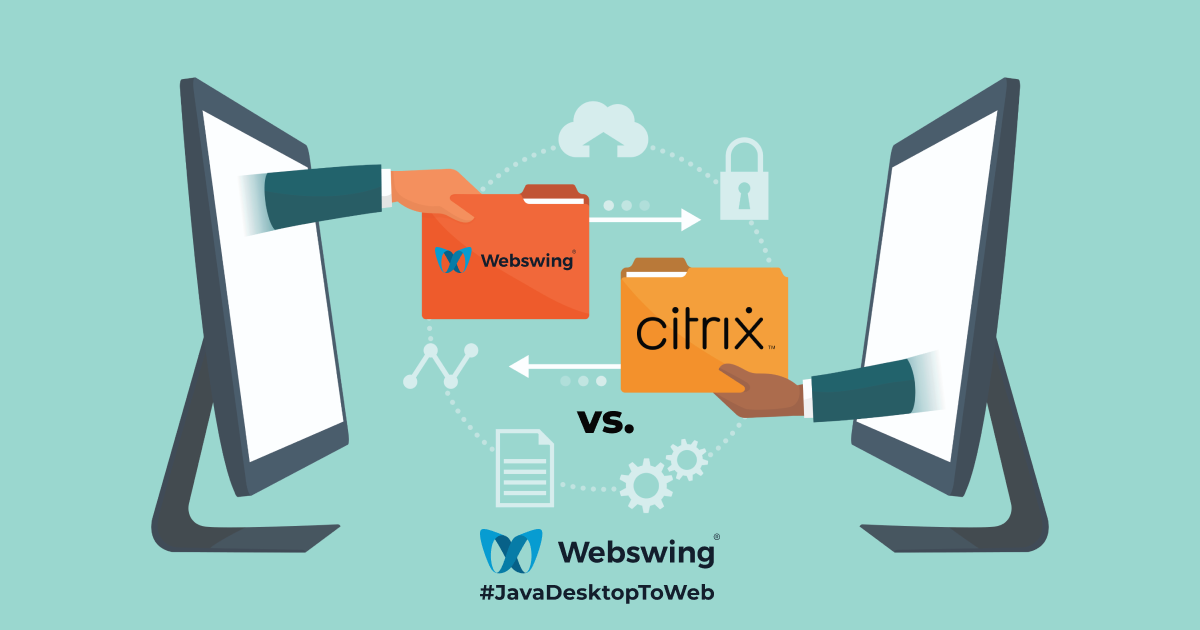We explain why we think Webswing might be just the right direction to go with legacy Java desktop applications in comparison with RDP solutions like Citrix.
Webswing and RDP are two popular technologies used to access Java business applications remotely. While both technologies have a strong position on the market, in recent years, there has been a trend of clients moving from Remote Desktop solutions towards more future-proof technologies like Webswing or migration of applications to native web. It is mainly due to cost considerations. However, there is more behind the scenes than what we would love to present in this article and explain why we think Webswing might be just the right direction to go with legacy Java desktop applications.

Remote Desktop
Remote desktop is a technology that allows users to access their desktop and applications on a remote machine easily. This technology is widely used in businesses, as it allows employees to work from any location and access their work desktop and applications. Remote desktop technology has been around for a long time and is proven as it supports millions of users around the globe.
Although, especially in the last couple of years companies are struggling to proceed with this technology while letting their users use applications remotely. One reason is that RDP is essentially a dead-end solution, which is not going to resolve companies’ technical debt and the second reason is infrastructure overhead and licensing costs (mainly costs tightly connected with Windows licensing model). Most notably the ongoing and considerably high licensing costs are the main reason why companies are shifting from RDP towards new technologies.
Webswing
On the other hand Webswing is a technology that allows users to access their Java business applications in a web browser, instantly. Webswing is a very popular alternative to remote desktop solutions, as it provides users with a fast and secure way to access their legacy desktop applications. Webswing is technology that runs on a server and acts as a proxy between the user's web browser and the Java business application.
Webswing’s unique architecture adds an additional layer of security which makes running of the application very secure compared to RDP solutions. The infrastructure overhead and licensing costs are also significantly lower than other alternatives, making it one of the most cost-effective choices on the market. Additionally, Webswing offers a wider range of integrations and better flexibility of integration with web software.
Another proven fact is that many applications, particularly database-intensive ones, can run a lot faster on Webswing since they're running from the same location/server. Webswing also provides a very clear path for the migration of applications towards a native web app. Thanks to its Migration Framework, it is a smart and frequently used choice for companies looking to get rid of their technical debt.
Therefore it’s no wonder that over the past few years, there has been a significant increase in the number of companies that have made the switch from Remote Desktop solutions (like Citrix) to Webswing. So if your company is still using Remote Desktop solutions, it might be time to consider making the switch to Webswing and join the growing number of satisfied customers who have already made the change.
Feel free to contact us and let’s talk about how webswing can help you with your transformation.

